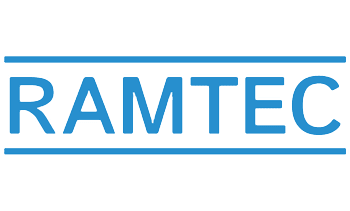Tri-Rivers’ RAMTEC Coordinator Presents in Washington DC
Tri-Rivers Career Center’s RAMTEC Coordinator/Engineering Technologies Instructor Ritch Ramey was part of a panel that presented Next Generation Robotics and the Future of Work to the Congressional Robotics Caucus Advisory Committee in the Rayburn House Office Building in Washington DC on April 18.
Ramey said, “The international race to lead the robotics revolution won’t be won in research labs alone, but will depend on effective workforce development programs and strategies. At Tri-Rivers RAMTEC we are proud to be leading the way in providing training locally and working towards ensuring that our training model is replicated to not only meet our district’s needs, but to provide solutions to Ohio’s and the Nation’s manufacturing skills gap.”
Ramey presented on the RAMTEC Model. “It was critical to our economy that we started developing K-12 programming, college credits and industrial certifications as well as creating a replicable public and private industry program to overcome our national 2.5 million technician shortage or Manufacturing Gap,” said Ramey. “RAMTEC has gained national attention. We recognized there was a critical need in Central Ohio for technicians and hands-on training and at RAMTEC developed partnerships with national leaders in manufacturing equipment to credential students and instructors.”
Ramey said, “We currently have 11 of our 19 high school Seniors making great wages building robotics work cells half a day in various robotics and automation facilities in Central Ohio while still in school. They also each earned more than $8,000 worth of industrial certifications as well as up to 15 college credit hours from Marion Technical College in their Engineering Technology programs. This sets them up for success.”

Opening remarks were given by Robotics Caucus Co-Chairs, Congressman Mike Doyle and Congressman Rob Woodall. The panel’s moderator was Dr. Ramayya Krishnan, Dean, Heinz College of Information Management and Public Policy, Carnegie Mellon University. The Heinz College is home to the Block Center for Technology and Society. Mr. Ramey represented secondary and Career Technical Education on the panel along with Mark Lewandowski, Procter & Gamble; Jeff Burnstein, President, Robotic Industries Association; Jim Key, President of USW Atomic Energy Workers Council, United Steelworkers; and Seth Hutchinson, Professor, KUKA Chair for Robotics, Georgia Tech Institute for Robotics and Intelligent Machines.
Ramey shared with the Robotics Caucus some of the history of how RAMTEC was developed. He explained that in 2003, three Marion County teachers—Ramey from Tri-Rivers and Ed Goodwin and Tad Douce from River Valley— decided to bring the National Robotics Challenge (NRC) contest to this area. “This contest has grown to more than 400 teams and 1300 participants in grades 4-16,” shared Ramey.
He emphasized that “a rural community of 70,000—Marion, Ohio—has become one of leaders in robotics and automation training in the nation.” However, he also said, “that even with our Tri-Rivers RAMTEC’s full high school program, adult training, incumbent worker training and customized training, we alone cannot fill the immediate need of Ohio. It will take thousands of schools training students in STEM, Robotics, coding and automation to fill the shortage of the skilled workers we need. A student’s exposure to these high technologies and high-paying careers should not be based on where they live. These great opportunities need to be available to all students K to Gray.”
“A new generation of robotics technologies are entering the U.S. economy. From shop floors to warehouses, robots are becoming common across a myriad of sectors—from transportation to retail, to hospitals, banks, and other services,” said Ramey.
Unlike earlier periods of automation, these autonomous systems technologies are increasingly designed to augment and collaborate with human workers, he told the committee members. Ramey said, “Studies of the manufacturing sector even indicate that as collaborative robotics are deployed in manufacturing environments, the number of new jobs increases as greater levels of robots are deployed. While the creation of new jobs is promising, it is also clear that new robotics technologies will have significant impact on the fundamental nature of work performed and that we must rise to meet the challenges.”
“This briefing brought together robotics industry, labor, workforce, technology research and public policy leaders to discuss what steps should be taken to ensure that the next generation robotics also means broader economic opportunity nation-wide,” said Ramey. “I made multiple contacts that will assist us in moving forward.”
Upon the completion of the presentation about 75 members of the committee and audience member had a 30 minute questions and answers session. Ramey said, “Most of the questions centered around RAMTEC and how can we as a nation need to develop more programs like RAMTEC. “It made me feel proud to hear the interest in our great programs in the Marion area. It was also very rewarding to be able to represent our community, the great state of Ohio and all our great public and private industrial partners on the panel. For me, it has really been a great experience to be a part of the creation and on-going development of RAMTEC.
Along with Ramey, the panel included: Mark Lewandowski, Procter & Gamble; Jeff Burnstein, President, Robotic Industries Association; Jim H. Key, Vice President, USW Local Union 550, Paducah, KY, President of USW Atomic Energy Workers Council, United Steelworkers; and Seth Hutchinson, Professor, KUKA Chair for Robotics, Georgia Tech Institute for Robotics and Intelligent Machines.


